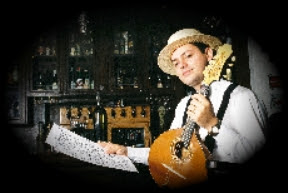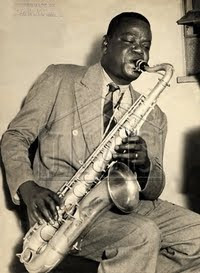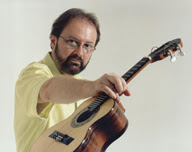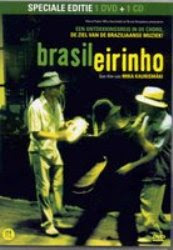Nosso Choro - Primeira Classe!



 The cavaquinho is an instrument of Portuguese origin, and is the highest-pitched member of the flat-bodied European guitar family. It came to Brazil as it came to other countries colonized by the Portuguese, and traveled as far as Portugal's commercial trading posts in Hawaii (where it transformed into the ukulele) and Indonesia. In Brazil the cavaquinho played a key part on the birth and development of urban popular music since the middle of the XIX century, both in the instrumental lineage that led to Choro, and in the vocal one that led to samba. It was in Brazil that the instrument reached its highest degree of development thanks to musicians such as Nelson Alves (1895/1960), Canhoto (Waldiro Frederico Tramontano 1908/1987) and Waldir Azevedo (1923/1980), who made the cavaquinho an immensely popular solo instrument.
The cavaquinho is an instrument of Portuguese origin, and is the highest-pitched member of the flat-bodied European guitar family. It came to Brazil as it came to other countries colonized by the Portuguese, and traveled as far as Portugal's commercial trading posts in Hawaii (where it transformed into the ukulele) and Indonesia. In Brazil the cavaquinho played a key part on the birth and development of urban popular music since the middle of the XIX century, both in the instrumental lineage that led to Choro, and in the vocal one that led to samba. It was in Brazil that the instrument reached its highest degree of development thanks to musicians such as Nelson Alves (1895/1960), Canhoto (Waldiro Frederico Tramontano 1908/1987) and Waldir Azevedo (1923/1980), who made the cavaquinho an immensely popular solo instrument.
A contemporary Brazilian master of the cavaquinho is Henrique Cazes (b 1959) from Rio de Jainero. The above and following info is quoted from his official website (click headline):
Born in a family of amateur musicians (his father was a guitarist and composer; his mother a singer), he started to play the guitar when he was six years old. He gradually went on to play cavaquinho (a four-string soprano guitar similar to the ukulele), mandolin, tenor guitar, banjo, twelve-string "caipira" guitar and lately the electric guitar - all self taught.
His professional debut came in 1976, with Coisas Nossas (Our Stuff), an ensemble that reveled in Brazilian music of the 20s and 30s. In 1980 he joined Camerata Carioca, where he worked together with two musicians who influenced him enormously: mandolinist Joel Nascimento and famed composer Radamés Gnattali. With the Camerata Henrique recorded the albums "Vivaldi & Pixinguinha" (FUNARTE 1982) and "Tocar" (Polygram 1983). Working regularly with singers Nara Leão and Elizeth Cardoso, Camerata traveled all over the country and toured Japan in 1985.
In 1988, Henrique started his career as a cavaquinho soloist, recording his first LP "Henrique Cazes" (Musicazes). The same year he published the instructional book "Modern School of Cavaquinho" (Lumiar Editora), which is still the most respected music book on the instrument. Still as a soloist, he released "Tocando Waldir Azevedo" (Kuarup 1990), "Waldir Azevedo, Pixinguinha, Hermeto & Cia" (Kuarup 1992), "Desde que o Choro é Choro" (Kuarup 1995) and "Relendo Waldir Azevedo" (RGE 1997). In 1997 he wrote the book "Choro, do Quintal ao Municipal" (Editora 34), a history of the 150 years of Choro music.
He founded and leads the Orquestra Pixinguinha, which since 1988 has performed and recorded Pixinguinha's original arrangements, with CDs also released in Europe and Japan. Considered the best cavaquinho soloist today and certainly one of the most active, Henrique Cazes developed a parallel career as record producer (with numerous record awards), in addition to his work as a composer of film, theater and television soundtracks.
---
Additional info on Henrique Cazes available at his website regarding the various musical projects he has directed and an extensive discography - the website is in both Portuguese and English.
To give you and impression of Henrique Cazes' virtuosic mastering of the solo cavaquinho, I insert two video fragments from YouTube. - The first is a solo performance of a composition by Waldir Azevedo "Minhas Mãos meu Cavaquinho"
The secound video fragment features Henrique Cazes playing his own "Estudo Nº1"
Jo
 A year ago today the Choro Music blog was started by my friend and co-editor, Hans Koert. After beeing introduced to the Brazilian choro in the summer of 2005, Hans decided to make a blog devoted to this musical artform and related genres as part of his Keep Swinging website.
A year ago today the Choro Music blog was started by my friend and co-editor, Hans Koert. After beeing introduced to the Brazilian choro in the summer of 2005, Hans decided to make a blog devoted to this musical artform and related genres as part of his Keep Swinging website. Soon after this event we heard rumors about a documentary on choro to be released on DVD, this put us on the trail of further investigations into the world of choro - the first result of this was my small contribution on Guitar Choro published as an article at Hans' website in March 2006, still accessable clicking here .
Soon after this event we heard rumors about a documentary on choro to be released on DVD, this put us on the trail of further investigations into the world of choro - the first result of this was my small contribution on Guitar Choro published as an article at Hans' website in March 2006, still accessable clicking here .Jo


This pioneering work in English, 'Choro: A Social History of a Brazilian Popular Music' by Tamara Elena Livingston and Thomas George Caracas Garcia is highly recommended, if you want to have an in-dept view and knowledge of choro. The book has been published 2005 and is available from Indiana University Press
Info in English on Brazilian groups and individual choro musicians may be found at All Music Guide, where researcher Alvaro Neder has provided a lot of useful information, often quoted here at our blog.
Another resource regarding info is the AllBrazilianMusic website, both in Portuguese and English - an encoclydepia of Brazilian musicians and groups covering most of the Brazilian genres in music.
If you interested in researching the recorded sound of original and historic choro artists, the best resource is the website of Instituto Moreira Salles, highly recommended.
To buy choro recordings on compact disc I recommend a visit at specialist retailers, if you do not consult the online service of the Brazilian record companies. Good service and an impressing catalogue of choro recordings may be found at the online facility of Samba Store
---
Among my first impressions of choro music was the impression of a vivid soundscape recreating
the sound of and longing for what I at first judged to be a bygone romatic era in music. In other words, my impression of choro was involving nostalgic feelings, not at all in a negative sense of the word 'nostalgic'. This feeling is still with me, and the positive meaning of the word comes through every time I listen to Jacob do Bandolim's 'Nostalgia'. Why not activate this feeling here to celebrate choro?
Jo
 Choro was born in Rio de Jainero during the late decades of the 19th Century and developed into a musical genre which expresses the musical soul of the city. I found a cartoon on YouTube that explains how the spirit of choro and the Carioca soul are experienced by a young boy, who encounters choro musicians performing in the street where he plays. Enjoy Alma Carioca: Um choro de menino
Choro was born in Rio de Jainero during the late decades of the 19th Century and developed into a musical genre which expresses the musical soul of the city. I found a cartoon on YouTube that explains how the spirit of choro and the Carioca soul are experienced by a young boy, who encounters choro musicians performing in the street where he plays. Enjoy Alma Carioca: Um choro de meninoThe soul of Carioca and the spirit of choro attract people from all over the world - and not just from other parts of Brazil. I found a video fragment of a roda de choro in the famous Rio music store, 'O Bandolim de Ouro', featuring a young Japanese, who learned to play bandolim listening to records by Jacob do Bandolim in Japan and then headed for Rio just to play together with the usual crowd of Brazilians at the store! Enjoy this performance of Jacob do Bandolim's 'Cabuloso'
If choro expresses the soul of Rio, the music never stops - you may attend choro sessions day and night. Night time seems to be the right time for a performance of Jacob do Bandolim's very popular 'Noites Cariocas'. Enjoy a video performance of this tune by Marco de Pinna Quinteto recorded at a night show in Ipanema,RJ.
Ending these impressions of Rio's musical life only a Happy Birthday to my friend and originator of this blog-spot, Hans, remains. In Dutch: Gelukkige Verjaardag!!!
Jo